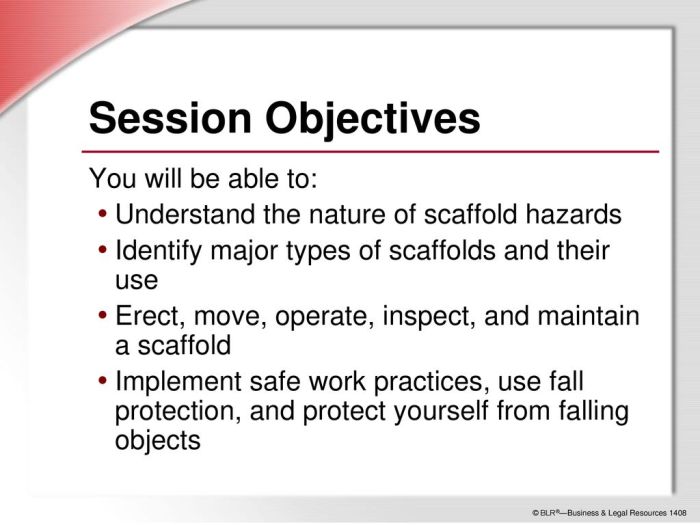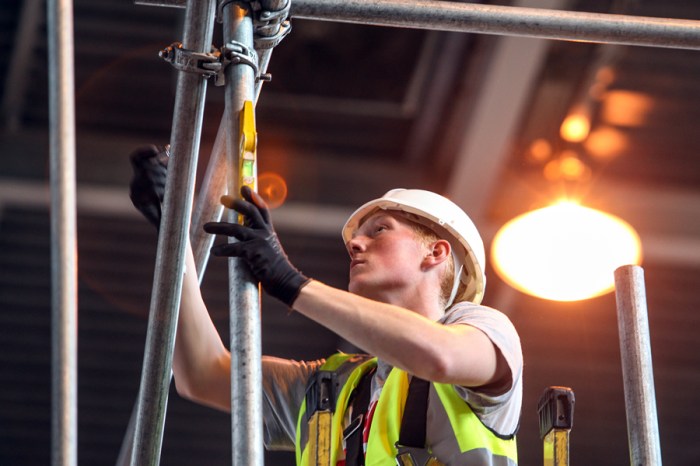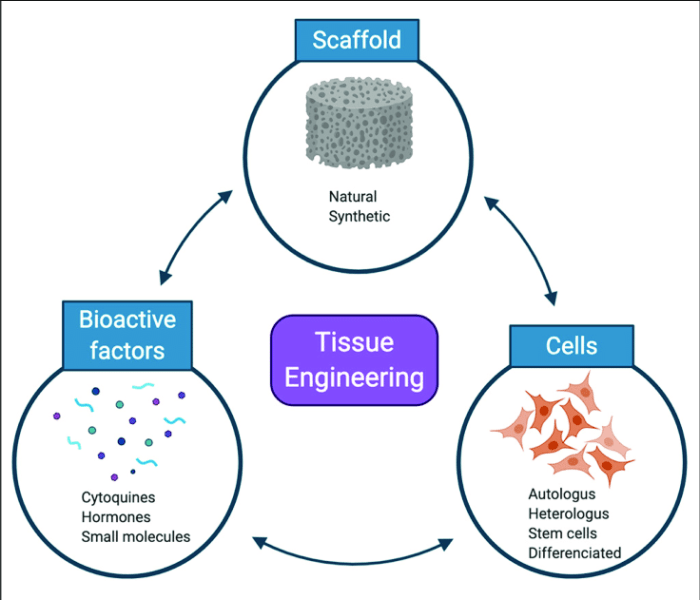It is important to inspect scaffolds and scaffold components regularly to ensure the safety of workers and the integrity of the structure. Scaffolding is a temporary structure used to provide access to elevated areas during construction, maintenance, and repair work.
It is essential that these structures are inspected regularly to identify any potential hazards and prevent accidents.
Scaffold inspections should be conducted by qualified and certified inspectors who are trained to identify and assess potential hazards. The frequency of inspections will vary depending on the type of scaffold, the usage, and the environmental conditions. However, it is generally recommended that scaffolds be inspected at least once a month, or more frequently if there are any concerns about the safety of the structure.
Scaffold Inspection

Scaffolding plays a crucial role in construction and maintenance operations, providing safe and efficient access to elevated areas. Regular and thorough inspections of scaffolds and their components are essential to ensure the safety of workers and prevent accidents.
Scaffold Inspection Frequency
Establishing a regular scaffold inspection schedule is paramount. The appropriate frequency should be determined based on factors such as:
- Scaffold type and complexity
- Usage and loading conditions
- Environmental conditions (e.g., weather, temperature)
Scaffold Inspection Procedures
Comprehensive scaffold inspections involve a systematic examination of all components, including:
- Platforms and decking
- Guardrails and toeboards
- Ladders and stairways
- Braces and supports
Inspection techniques include visual examination, load testing, and ultrasonic testing.
Scaffold Component Inspection
Critical scaffold components include:
- Planks and boards
- Couplers and pins
- Bases and anchors
Defective components can pose significant hazards, so careful inspection is essential.
Scaffold Inspection Reporting
Inspection findings should be documented in a detailed report, including:
- Observations and measurements
- Defects identified
- Recommended actions (e.g., repairs, replacements)
Digital reporting tools and software can streamline this process.
Training and Certification
Qualified and certified scaffold inspectors are crucial for ensuring accurate and reliable inspections. Training and certification programs cover:
- Scaffold design and construction principles
- Inspection procedures and techniques
- Safety regulations and standards
Consequences of Inadequate Inspection, It is important to inspect scaffolds and scaffold components
Neglecting proper scaffold inspections can have severe consequences, including:
- Worker injuries or fatalities
- Project delays and cost overruns
- Legal liability and fines
Examples of incidents highlight the importance of rigorous scaffold inspection and maintenance.
Questions and Answers: It Is Important To Inspect Scaffolds And Scaffold Components
How often should scaffolds be inspected?
The frequency of inspections will vary depending on the type of scaffold, the usage, and the environmental conditions. However, it is generally recommended that scaffolds be inspected at least once a month, or more frequently if there are any concerns about the safety of the structure.
What are the most common hazards associated with scaffolds?
The most common hazards associated with scaffolds include:
- Falls from height
- Collapse of the scaffold
- Electrocution
- Falling objects
- Tripping and slipping
What are the consequences of failing to properly inspect scaffolds?
The consequences of failing to properly inspect scaffolds can be severe, including:
- Injury or death to workers
- Project delays
- Legal liability

